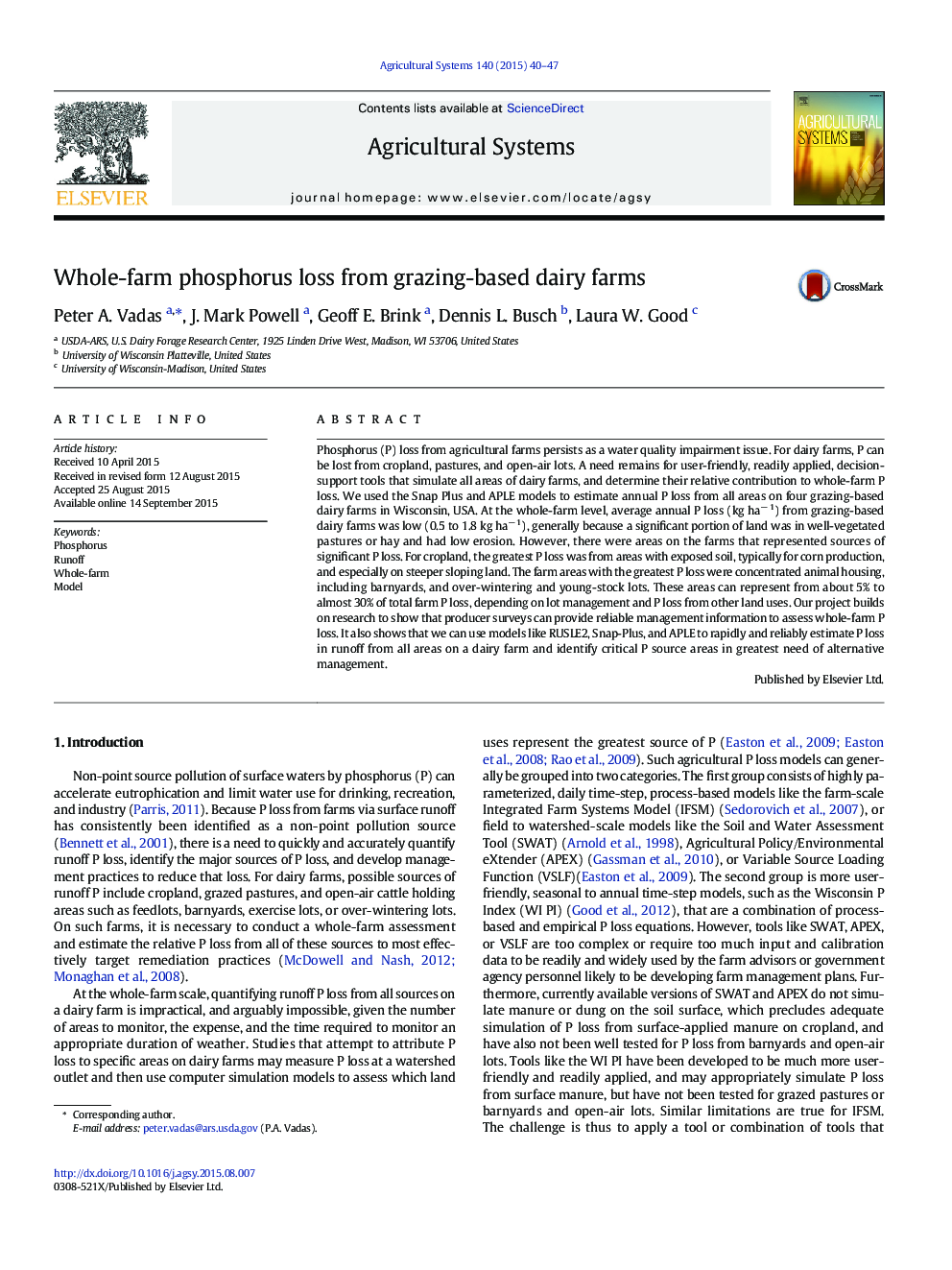| Article ID | Journal | Published Year | Pages | File Type |
|---|---|---|---|---|
| 4491126 | Agricultural Systems | 2015 | 8 Pages |
•Phosphorus loss in runoff from dairy farms is a water quality issue.•Whole-farm assessment of phosphorus loss is needed.•We estimated phosphorus loss from four grazing-based dairies in Wisconsin, USA.•Rapid surveys and user-friendly models can provide reliable whole-farm analysis.
Phosphorus (P) loss from agricultural farms persists as a water quality impairment issue. For dairy farms, P can be lost from cropland, pastures, and open-air lots. A need remains for user-friendly, readily applied, decision-support tools that simulate all areas of dairy farms, and determine their relative contribution to whole-farm P loss. We used the Snap Plus and APLE models to estimate annual P loss from all areas on four grazing-based dairy farms in Wisconsin, USA. At the whole-farm level, average annual P loss (kg ha− 1) from grazing-based dairy farms was low (0.5 to 1.8 kg ha− 1), generally because a significant portion of land was in well-vegetated pastures or hay and had low erosion. However, there were areas on the farms that represented sources of significant P loss. For cropland, the greatest P loss was from areas with exposed soil, typically for corn production, and especially on steeper sloping land. The farm areas with the greatest P loss were concentrated animal housing, including barnyards, and over-wintering and young-stock lots. These areas can represent from about 5% to almost 30% of total farm P loss, depending on lot management and P loss from other land uses. Our project builds on research to show that producer surveys can provide reliable management information to assess whole-farm P loss. It also shows that we can use models like RUSLE2, Snap-Plus, and APLE to rapidly and reliably estimate P loss in runoff from all areas on a dairy farm and identify critical P source areas in greatest need of alternative management.
